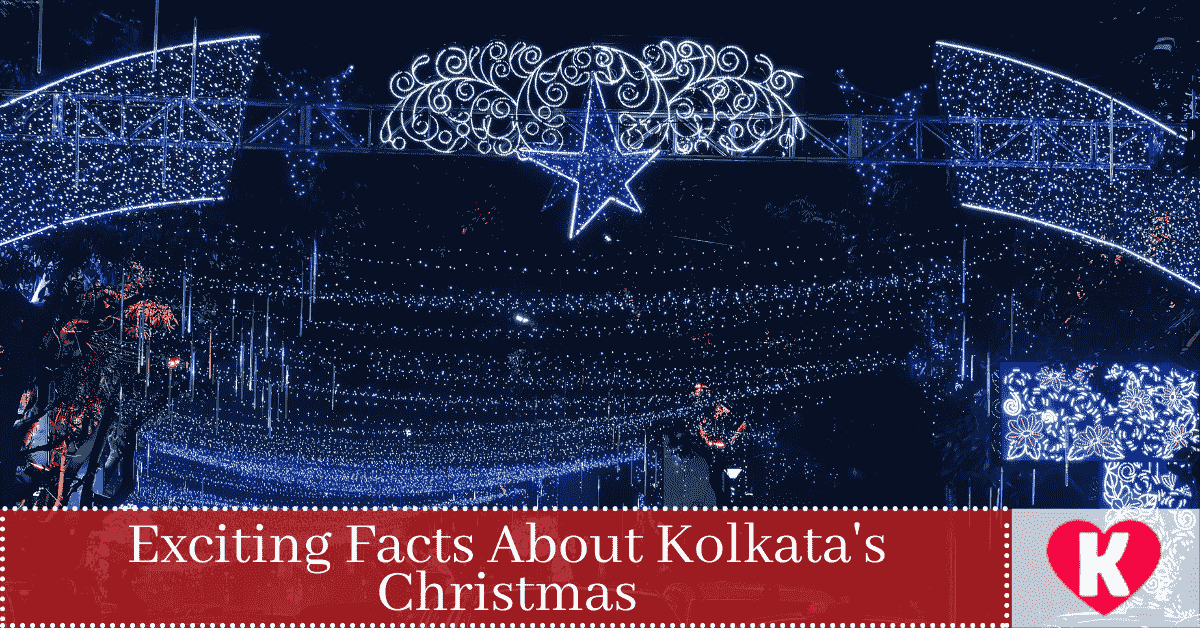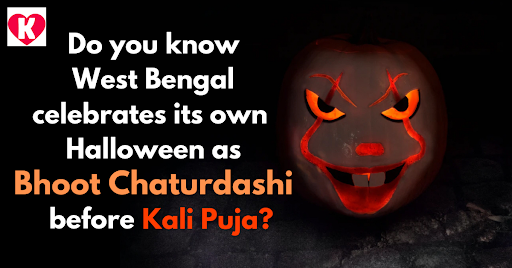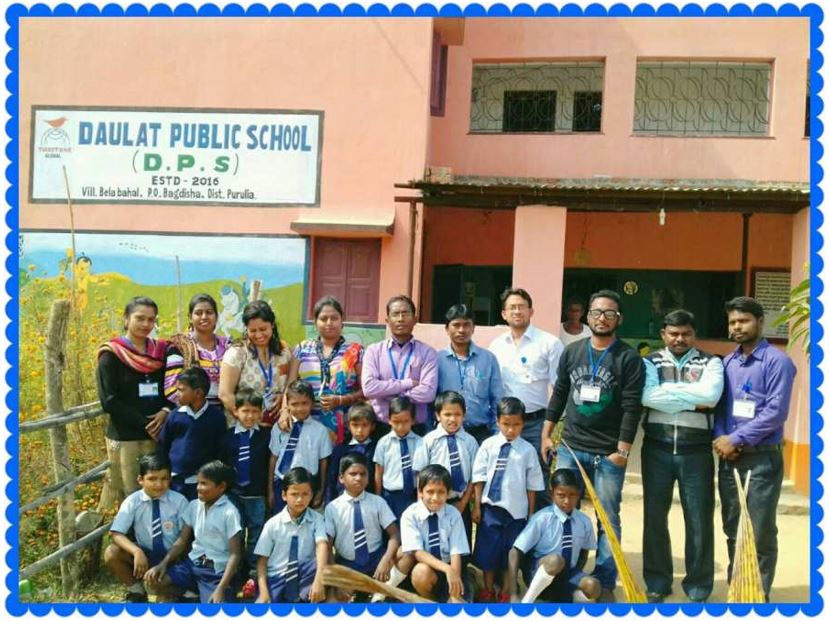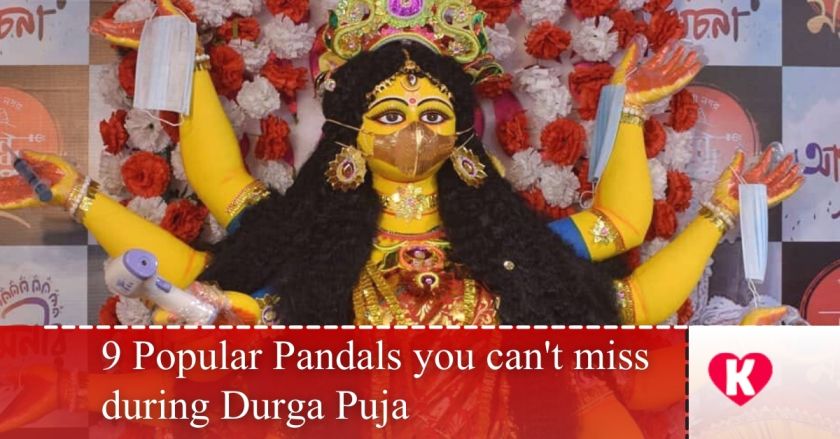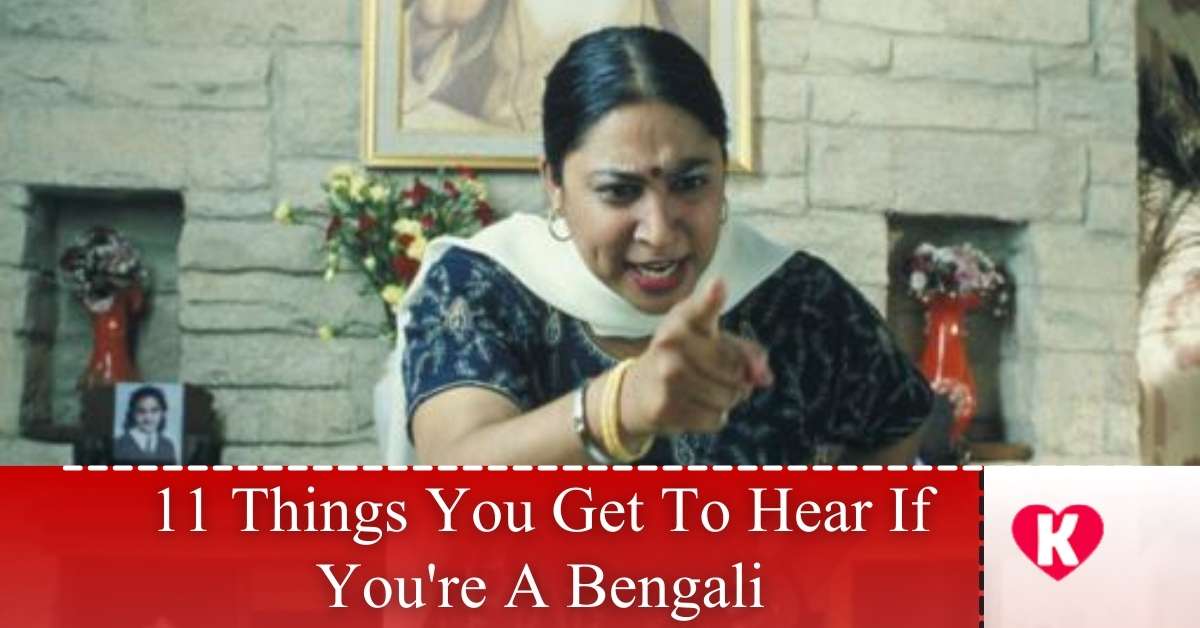Do you know West Bengal celebrates its own Halloween as Bhoot Chaturdashi before Kali Puja?
We all have surely heard of Halloween celebrated all over the world, but West Bengal has its own customised Halloween termed as Bhoot Chaturdashi. The day before Kali puja is celebrated as Bhoot Chaturdashi. Sure, it does not include dressing up as your favourite horror character and going trick or treating but there are other rituals that you have to indulge in, so that you are not tricked by a ghost nearby.
The history of Bhoot Chaturdashi
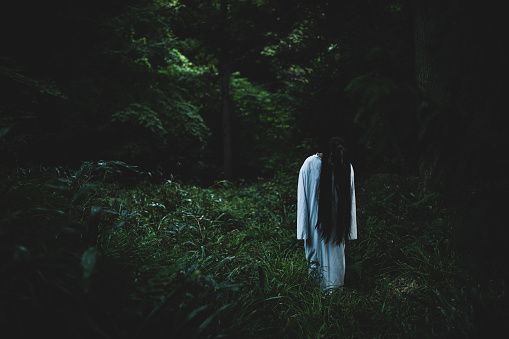
Many fables surround the origin on bhoot Chaturdashi in West Bengal. The most popular among the lot is of a couple who never cleaned their house. In due time, spirits started living in the pile of garbage. One day they saw a ghost emerging from the pile, they got scared and decided to clean up the house, of the garbage as well as of the ghosts.
They cleaned the entire house, alongside, they washed the house with the water from 14 different types of green leaves; this was supposed to drive off the ghosts. To light up the new beginning of their lives they lit up the house with 14 candles as well.
Another belief originates form the dark practices of the tantriks in ancient Bengal. It was assumed tantriks kidnap children in the dark of night the day before Kali Puja and performed rituals. To avoid that, people used to light up their homes so that no kidnapping could take place before Diwali.
Another legend states that Bhoot Chaturdashi is also called Narak Chaturdashi after Narakasura, son of Bhudevi and Lord Varaha. He attacked Lord Krishna, was defeated but wanted the world to member him in a happy memory so he requested Satyabhama, Lord Krishna’s Consort to celebrate his demise by lighting up of lamps, and hence the day came into existence.
What is the similarity between bhoot Chaturdashi and Halloween?
Firstly, let’s not forget the connection with the spiritual world. Both of these occasions involve communication and contact between the mortal and immortal spiritual realms.
According to mythology, Halloween opens up the gates of the evil realm with our mortal realm so that they can enter our world. Similarly, Bhoot Chaturdashi, according to Bengali mythology serves as the media when, the 14 forefathers visit the family to take a look. Not quite different from Halloween, is it?
Both Bhoot Chaturdashi and Halloween, have a custom to keep away the evil by lighting up of the household. In West Bengal, people light up their home with oil lamps, candles; in Halloween pumpkins are carved and lamps are put in it to keep away the spirits.
What are the rituals of Bhoot Chaturdashi?
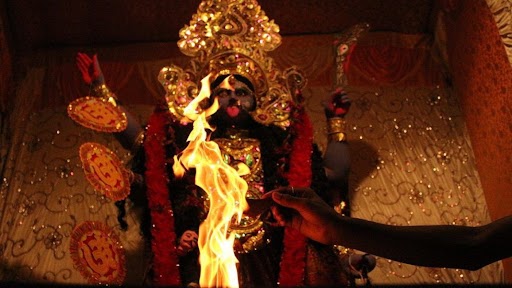
Since the gateway is open, not only your forefathers visit you, a few ghosts may also roam around freely, so you have to watch out. Here are a few common rituals followed by every household in West Bengal, the day before Deepawali.
- You have to eat the “Choddo Shak”, meaning 14 different leaves from plants. This ritual is followed to please the forefathers as they seem to visit the day before Deepawali. This practice is religious, but scientists have found numerous benefits associated to this practice like fighting off diseases that comes with winter and building immunity against other diseases. Some of the leaves included in Choddo Shak are neem leaves that helps to fight allergy and rashes, hincha helps with nervous disorders, kemuk deworms, beto protects the liver, ol reduces inflammation. Even in tradition and rituals, there are scientific benefits associated.
- To make the environment happy and easy, 14 candles or oil lamps are lit up in the house. This is to keep the spirits away. Every corner of the house should the lit up by at least one candle. Some believe the 14 diyas help in pulling out the negative energy build up of the house and welcomes the advance of positive energy before Diwali.
- Alongside the rituals, everyone in West Bengal light up their house with string lights, disco lights to gear up for Deepawali or kali Puja that is just the following day, the festival of lights.
- Many people light up one single light, tie it up on a stick and point it towards the sky, placing it on the roof. It is believed this is done to pay a tribute to the forefathers. The practice originated from Odisha, the neighbouring state of West Bengal. Some also believe this light serve as the way which directs forefathers directly to their home.
After you are done with the rituals, you can prep for kali puja, or you can maintain the eerie essence of bhoot Chaturdashi and watch a horror movie to let the demons crawl under your bed.
Looking from the folklore point, all of these seem quiet meaningless, however, scientists are looking into these matters and they find scientific reasons behind all of these rituals. There is no harm in following any of the rituals however, there is plenty to gain form it.


